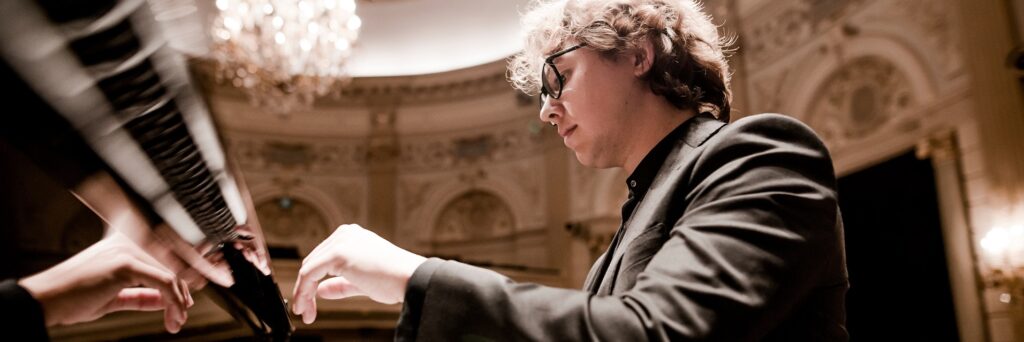

Christmas with the Dutch Bach Society
Programme
- Johann Hermann Schein Veni redemptor gentium (stanza 1-5)
- Johann Hermann Schein from Banchetto musicale, Suite no. 1: Padouana
- Johann Hermann Schein Veni redemptor gentium (stanza 7 and 8)
- Johann Hermann Schein from Banchetto musicale, Suite no. 1: Gagliarda
- Tobias Michael Das Volk, so im Finstern wandelt
- Johann Hermann Schein from Banchetto musicale, Suite no. 1: Allemande
- Philipp Nicolai Wie schön leuchtet der Morgenstern
- Nicolaus Adam Strungk Wie schön leuchtet der Morgenstern
- Orlando di Lasso Angelus ad pastores ait
- composer anonymous Illuminare Jerusalem
- Johann Kuhnau Wie schön leuchtet der Morgenstern
- Andreas Hammerschmidt Machet die Tore weit
- composer anonymous Grates nunc omnes
- Johann Sebastian Bach Magnificat
The Nederlandse Bachvereniging under the direction of Alex Potter performs a magnificent Christmas concert focusing on music from the Thomas Church in Leipzig. The highlight is Bach's Magnificat.
Christmas in Leipzig
The Nederlandse Bachvereniging under the direction of Alex Potter is packing out a magnificent Christmas concert with Bach's radiant Magnificat as the finale. The path to it consists of music for Advent and Christmas as it sounded in Leipzig from the time before Bach. It is an extremely colorful concert with instrumental and vocal works in a wide variety of settings. Unaccompanied Gregorian hymns, German and Latin motets and songs including the famous Wie schön leuchtet der Morgenstern, violin solo and some dances, it can all be heard in this special Christmas program. Music is not only played and sung on stage, but also from all corners of the hall.
Magnificat by Bach
All that culminates in the full vocal and orchestral splendor of Bach's Magnificat. It was the first major festive work, complete with timpani, trumpets and five-part choir, that he wrote almost immediately after his appointment to Leipzig. Originally intended for the feast of Mariä Heimsuchung (Visitation of Mary) on July 2, 1723, he produced a version that same year that he had performed at the Christmas Day vespers. To make it a true Christmas composition, he added some polyphonic carols. Thus it became one of his most played liturgical works, so much so that his son Carl Philipp Emanuel performed it several times in Hamburg, where he was church musician.







